Docker Exec Format Error
Docker has emerged as a popular platform for containerization technology, allowing developers to create and deploy applications in an isolated and efficient manner. With Docker, applications and their dependencies are packaged into lightweight containers, providing consistent environments across different systems. These containers are portable, making it easier to deploy applications hassle-free across various environments.
Understanding the exec Format Error:
The exec format error is an error message that occurs when Docker tries to execute a command or a file within a container but encounters an incompatible or unsupported format. This error commonly occurs when the container’s architecture does not match the host system’s architecture or when the executed file does not have the proper executable permissions or a correct shebang.
The exec format error can have a significant impact on running Docker containers, as it prevents the execution of essential commands or files within the container. This can lead to application failures, performance issues, and overall disruption of the containerized environment.
Causes of the exec Format Error:
Several factors contribute to the occurrence of the exec format error in Docker containers. These include:
1. Incompatible image architecture and host architecture: If the container’s architecture mismatches the host system’s architecture, the exec format error can occur. For example, trying to run an image built for an ARM architecture on an x86-based system can result in this error.
2. Missing or incorrect shebang in the executed file: The shebang, also known as the hashbang, is the first line in a script that specifies the interpreter to be used for executing the file. If the shebang is missing or incorrect, Docker may fail to execute the file, resulting in the exec format error.
3. Non-executable or corrupted files in the container: Docker requires the files it executes to have the proper executable permissions. If a file lacks the necessary permissions or is corrupted, the exec format error can occur.
4. Mismatched Linux distributions or unsupported operating systems: Docker containers rely on the underlying operating system to function properly. If there is a mismatch between the Linux distribution or the operating system version specified in the container and the host system, the exec format error may arise.
Resolving the exec Format Error:
Promptly resolving the exec format error is essential to ensure the smooth operation of Docker containers. Here are several solutions to address this error:
Solution 1: Check the Compatibility
To resolve the exec format error, it is crucial to verify the compatibility between the host system and the container image. Use the ‘uname’ command in the host system to check the architecture compatibility. Additionally, determine the base operating system of the Docker image and verify if it matches the host system.
Solution 2: Update the Docker Image
Keeping Docker images up to date is important in resolving the exec format error. Docker regularly releases updates, including bug fixes, security patches, and compatibility improvements. Use the relevant commands, such as ‘docker pull’ or ‘docker build,’ to update the Docker image to the latest version. Verify the successful image update and check if the exec format error is resolved.
Solution 3: Verify the Executable Path and Permissions
Check the file permissions and the executable path within the container to ensure they are correct. Use the ‘ls -l’ command to view the file details, including permissions. If necessary, change the file permissions using the ‘chmod’ command, allowing the file to be executed.
Solution 4: Install Required Dependencies
The exec format error may occur due to missing dependencies within the container. Identify the missing dependencies causing the error and use package managers, such as ‘apt’ or ‘yum,’ to install the required dependencies within the container. After installing the dependencies, update the container image to ensure the changes take effect.
Conclusion:
The exec format error can be a common challenge faced by Docker users, but understanding its causes and implementing the appropriate solutions can help resolve it effectively. Checking compatibility, updating Docker images, verifying executable paths and permissions, and installing required dependencies are all important steps in troubleshooting and fixing the exec format error. By following these solutions, users can ensure the smooth execution of commands and files within Docker containers, leading to a more efficient and reliable containerized environment.
Bash ./ Executable : Cannot Execute Binary File : Exec Format Error
What Is Exec Format Error Docker?
Introduction
Docker has revolutionized how software applications are developed and deployed by enabling the creation of lightweight, portable, and scalable containers. However, encountering errors is not uncommon, and one such error is the “exec format error.” This article aims to provide a comprehensive understanding of exec format error Docker, its causes, and troubleshooting methods.
I. What is Exec Format Error Docker?
Exec format error Docker is an error message that occurs when attempting to execute a binary file within a Docker container. The error message typically states “exec format error” and can arise due to various reasons, preventing the execution of the desired file.
II. Causes of Exec Format Error Docker
1. Architecture Incompatibility:
Exec format error Docker often occurs when there is an architecture mismatch between the host and the container. Docker containers are built for specific architectures, such as x86, Arm, or PowerPC. If the container’s architecture does not match the host’s architecture, the binary file cannot be executed, resulting in the exec format error.
2. Unsupported Binaries:
Another common cause is attempting to execute a file with an unsupported format or architecture within the Docker container. Some of the executable formats may not be compatible with Docker, causing errors during execution.
3. File Corruption:
In some cases, the exec format error may arise due to file corruption within the Docker container. This can occur during the image creation or transfer process, resulting in incomplete or incorrect file formats, rendering them unexecutable.
III. Troubleshooting Exec Format Error Docker
1. Verify Architecture Compatibility:
To resolve exec format error, ensure that the architecture of the Docker container matches the host system’s architecture. You can check the architecture of the host using the ‘uname -m’ command, while for the container, you can inspect the architecture label in the Dockerfile or examine the image’s documentation. If there is a mismatch, rebuild the container for the correct architecture.
2. Check Binary Compatibility:
Confirm if the binary file within the Docker container is compatible with the specified architecture. Bear in mind that some binaries may only be designed to run on particular architectures. If the binary is incompatible, either locate a suitable alternative or rebuild the container with the correct binary version.
3. Ensure File Integrity:
If the exec format error persists, verify the integrity of the file. Check if the file is corrupted or incomplete by comparing the hash values or re-downloading the file. If the error persists, try using a different source or rebuilding the Docker image from scratch.
4. Docker Build Context:
In scenarios where you encounter exec format error during the Docker build process, ensure that the necessary files are correctly included in the Docker build context. The Docker build context should contain all the relevant files and directories required for successful execution within the container.
FAQs: Common Queries Regarding Exec Format Error Docker
Q1. Can I execute Docker containers across different architectures?
A1. While it’s possible to run containers across different architectures, it requires emulation or support from the host system. Ensure the host system and container architecture are compatible to avoid exec format errors.
Q2. How can I check the architecture of a Docker container image?
A2. You can use the ‘docker image inspect
Q3. What should I do if the required binary is not compatible with Docker?
A3. If the required binary is not compatible with Docker, try finding or compiling a Docker-compliant version of the binary, or consider using an alternative Docker image that supports your specific requirements.
Q4. Can Docker run on ARM-based processors?
A4. Yes, Docker supports ARM-based processors. However, you need to use Docker images and tools explicitly designed for ARM architectures to avoid exec format errors.
Conclusion
Exec format error Docker can be a common stumbling block that prevents the execution of binary files within Docker containers. By understanding the possible causes and following the troubleshooting measures provided, developers and system administrators can effectively resolve this error and ensure smooth execution of their Dockerized applications. Remember to verify the architecture compatibility, check binary compatibility, ensure file integrity, and pay attention to the Docker build context to mitigate the chances of facing the exec format error in Docker.
How To Exec A Docker Image?
Docker has become an essential tool for developers and sysadmins due to its versatility, scalability, and portability. With Docker, you can package your application and its dependencies into a container that can run on any system. This eliminates many deployment and compatibility issues. In this article, we will explore the process of executing a Docker image and provide a step-by-step guide along with a FAQs section to address common queries.
## What is a Docker Image?
Before we dive into execution, let’s quickly understand what a Docker image is. A Docker image is a lightweight, standalone, and executable software package that contains everything needed to run an application, including the code, runtime, libraries, and system tools. It serves as a template from which containers are created. Images are built using Dockerfiles, which specify the instructions to assemble the necessary components.
## Step-by-Step Guide to Executing a Docker Image
1. Install Docker: Before executing Docker images, you need to install Docker on your machine. Visit the Docker website and follow the instructions for your specific operating system. Once installed, you can verify the installation by running the `docker –version` command.
2. Choose or Build an Image: Next, you need to select a Docker image to execute. Docker Hub (hub.docker.com) provides a vast collection of pre-built Docker images for various applications and frameworks. If you don’t find the desired image, you can build your own using a Dockerfile. For this guide, we will assume you have already chosen an image.
3. Download the Image: To execute a Docker image, you first need to download it from a registry, which is a repository for Docker images. By default, Docker pulls images from Docker Hub. Use the `docker pull` command followed by the image name and tag to download a specific version. For example, `docker pull nginx:latest` downloads the latest version of the nginx web server image.
4. View Downloaded Images: To view the downloaded Docker images on your system, run the `docker images` command. It will list all the images along with their repository, tag, and size.
5. Run a Container: With the Docker image downloaded, you can now create and run a container. Containers are the instances of images that can be executed and managed. Use the `docker run` command followed by the image name to start a container. For example, `docker run nginx` starts a container using the nginx image. By default, containers run in the foreground, meaning they occupy your terminal. To run them in the background, add the `-d` flag like `docker run -d nginx`.
6. Expose Ports: If your application requires network connectivity, you might need to expose certain ports on the container to interact with the host system or other containers. Use the `-p` flag followed by the host port and container port to expose them. For example, `docker run -p 8080:80 nginx` exposes port 80 of the nginx container on port 8080 of the host system.
7. Persist Data: Containers are ephemeral by default, meaning any changes made inside a container are lost once it is stopped. To persist data or make it accessible beyond the container’s lifespan, you can mount volumes using the `-v` flag followed by the host directory and container directory. For instance, `docker run -v /path/on/host:/path/on/container nginx` mounts the given host directory inside the nginx container.
8. Explore Container Logs: To view the logs generated by a running container, utilize the `docker logs` command followed by the container ID or name. You can keep track of your application’s output and troubleshoot any issues.
9. Manage Containers: In addition to execution, Docker provides several commands to manage containers. Use `docker ps` to view all running containers, `docker stop` to halt a container, and `docker rm` to remove a container. Remember, removing a container does not delete the underlying image.
## FAQs
Q1. Can I execute multiple containers from a single image?
Yes, you can execute multiple containers from a single image. Each instance will run independently as a separate container.
Q2. Is it possible to execute a Docker image on Windows and macOS?
Absolutely! Docker is cross-platform and supports Windows, Linux, and macOS. However, please note that not all images are compatible with every operating system.
Q3. How much disk space do Docker images occupy?
The disk space occupied by Docker images varies based on their complexity and size. However, it is advised to regularly clean up unused images using the `docker system prune` command.
Q4. Can I modify a running container?
Yes, you can modify a running container. Use the `docker exec` command followed by the container ID or name to execute commands within the container’s context.
Q5. Are Docker images secure?
Docker provides an isolated environment, but it is important to follow security practices when using Docker. Regularly update your base images and utilize official image repositories to reduce vulnerabilities.
Wrapping Up
Executing a Docker image is a fundamental task when leveraging Docker’s containerization capabilities. By following the step-by-step guide provided in this article, you can effortlessly execute and manage Docker containers. Remember to choose or build suitable images, utilize port and volume mappings, and explore container logs for effective application execution. With Docker’s flexibility and robustness, your development and deployment workflows can be streamlined, bringing numerous benefits to your projects.
Keywords searched by users: docker exec format error Exec format error docker, Docker m1 exec format error, Exec /bin/sh: exec format error, Exec /usr/local/bin docker entrypoint sh: exec format error, Exec init exec format error, Exec format error k8s, Exec format error unknown, Standard_init_linux.go:228: exec user process caused: exec format error
Categories: Top 36 Docker Exec Format Error
See more here: nhanvietluanvan.com
Exec Format Error Docker
When working with Docker, developers leverage containerization technology to create isolated environments for their applications. This allows them to package and distribute software along with all its dependencies, ensuring consistency across different environments.
However, occasionally, when attempting to run a Docker container, users might encounter the “Exec format error” message. This error typically indicates a problem with the executable file format within the container, preventing it from being executed correctly.
There are several possible causes for the Exec format error in Docker:
1. Architecture mismatch: One possible reason for the Exec format error is an architecture mismatch between the host system and the image being run. Docker containers rely on the host system’s architecture to execute the binary files within them. If the architectures do not match, the Exec format error will occur. For example, trying to run an x86_64 image on an ARM-based host will likely result in this error.
2. Incompatible OS: Another common cause is an incompatible operating system. Docker containers are designed to work seamlessly across different platforms, but sometimes, certain OS-specific features or dependencies can cause compatibility issues. Ensure that the container image was built for the same OS version on the host system to avoid this error.
3. Corrupted or incomplete image: A corrupted or incomplete Docker image can also trigger the Exec format error. When pulling or building images, files may get corrupted or not fully downloaded, leading to execution problems. Verifying the integrity of the image or re-pulling it can help resolve this issue.
Troubleshooting the Exec format error requires some systematic steps:
1. Check the Dockerfile and build process: Ensure that your Dockerfile is correctly specifying the base image and any necessary dependencies. Make sure the image is built appropriately for the desired architecture and OS. Double-check the build process to avoid any mistakes.
2. Verify image compatibility: Check if the Docker image you are trying to run is compatible with your host system’s architecture and OS. If there is an architecture mismatch, consider finding an image that matches your system or using a different host with a compatible architecture.
3. Rebuild the image: If you suspect a corrupted or incomplete image, try rebuilding it from scratch. Remove the existing image and containers associated with it, then rebuild and run the new image. This process ensures a fresh start and can resolve any issues related to the image itself.
4. Update Docker: Ensure that you are using the latest version of Docker. Newer versions often come with bug fixes and improvements that may resolve the Exec format error. Use the Docker official website or package manager to update Docker to the latest stable release.
FAQs (Frequently Asked Questions):
Q1. Can I run a different architecture Docker image on my host system?
A1. No, Docker images are specific to their intended architecture. Trying to run a different architecture image on a host system will result in an Exec format error. Stick to images compatible with your host system’s architecture.
Q2. I am running Docker on macOS/Windows. Can I encounter an Exec format error?
A2. Yes, macOS and Windows users may also encounter an Exec format error, even though they are running Docker using virtualization technology. The error can occur if the architecture or OS of the virtualization layer differs from the image being run.
Q3. How can I check the architecture of my host system?
A3. You can use the `uname -m` command in the terminal to check the architecture of your host system. Common architectures include x86_64 (Intel 64-bit), arm64 (ARM 64-bit), and armhf (ARM 32-bit).
Q4. I still face the Exec format error after trying the troubleshooting steps. What should I do?
A4. If the issue persists, verify that the Docker image is coded and built correctly. Reach out to the image’s maintainer or consult relevant Docker forums and communities for further assistance. This error is relatively common, and you are likely to find solutions specific to your situation.
In summary, the Exec format error in Docker is a common issue that occurs due to architecture mismatches, incompatible OS versions, or corrupted images. By following the troubleshooting steps mentioned earlier and considering the FAQs, you can effectively address and resolve this error. Understanding the root causes and available solutions will help make your Docker containerization experience smoother and more enjoyable.
Docker M1 Exec Format Error
Introduction:
Docker has revolutionized the world of virtualization and containerization, simplifying software deployment and providing a consistent environment across different platforms. However, like any technology, it is not immune to occasional errors or issues. One such error that Docker users might encounter is the “m1 exec format error.” In this article, we will delve into the details of this error, discuss its causes, and provide troubleshooting steps and frequently asked questions to help you resolve it efficiently.
Understanding the Docker m1 Exec Format Error:
The “m1 exec format error” is a relatively common issue faced by Docker users running containers on an incompatible system architecture. This error occurs primarily when trying to execute a binary within a container that is built for a different CPU architecture than the host running Docker.
The error message typically reads: “standard_init_linux.go:217: exec user process caused ‘exec format error’.”
Causes of the Docker m1 Exec Format Error:
1. Different CPU architecture: Docker containers are platform-independent and can run on various architectures. However, container images may contain binaries compiled explicitly for a particular CPU architecture, such as x86_64, ARM, or ARM64. If you attempt to run a container image built for a different architecture than your host system, the m1 exec format error occurs.
2. Incompatible operating systems: The m1 exec format error can also arise when attempting to run a container image that is specifically designed for a different operating system, such as Linux, on a host system running Windows or macOS.
Troubleshooting the Docker m1 Exec Format Error:
To resolve the Docker m1 exec format error, you need to identify the root cause and take appropriate measures. Here are some troubleshooting steps that can help you overcome this issue:
1. Verify the host system architecture: Ensure that your host system matches the architecture expected by the container image. You can check your system architecture using the `uname -m` command. If it doesn’t match the container image requirements, consider using a compatible container image or finding an alternative solution.
2. Check Docker version compatibility: Ensure that you have the latest Docker version installed. Older versions may have limitations or bugs that can cause the m1 exec format error. Updating Docker to the latest version can often resolve compatibility issues.
3. Choose the correct container image: Carefully select container images that match your host system architecture and operating system. For example, if you are running Docker on an ARM-based system, choose ARM-compatible container images. Verify the official documentation or repository of the container image for compatibility information.
4. Build multi-architecture images: If you need to run containers on different architectures, consider building multi-architecture images. Docker Buildx is a useful tool for creating such images. It allows you to build and push images across multiple platforms simultaneously, ensuring compatibility with various host systems.
5. Employ emulation techniques: In some cases, it may be possible to run containers of different architectures on an incompatible host system using emulation techniques. Tools like QEMU can assist in emulating an architecture within the host, allowing you to execute the container image smoothly.
FAQs:
Q1. Can I run a container of a different architecture on my system?
A1. No, running a container of a different architecture is not feasible without employing emulation techniques or ensuring compatibility with the host system architecture.
Q2. How can I check the architecture of my host system?
A2. You can use the command `uname -m` in the terminal to determine the architecture of your host system.
Q3. Why does the m1 exec format error occur only on some container images and not others?
A3. The m1 exec format error occurs because the container image is built for a different CPU architecture than the host system. If the container image matches your host system’s architecture, the error should not occur.
Q4. Can I convert a container image from one architecture to another?
A4. Converting a container image from one architecture to another is not a straightforward process and is usually not recommended. It is better to use pre-built images matching your host system’s architecture.
Q5. What if I need to run containers of different architectures on my host?
A5. You can use tools like Docker Buildx to build multi-architecture images. This allows you to create container images that are compatible with various architectures and run them seamlessly on different host systems.
Conclusion:
The Docker m1 exec format error occurs when trying to run a container image built for a different CPU architecture than the host system. By understanding the reasons behind this error and following the troubleshooting steps provided, you can address and resolve the issue effectively. Ensuring compatibility between your host system and the container images you use is crucial for a smooth Docker container deployment experience.
Images related to the topic docker exec format error
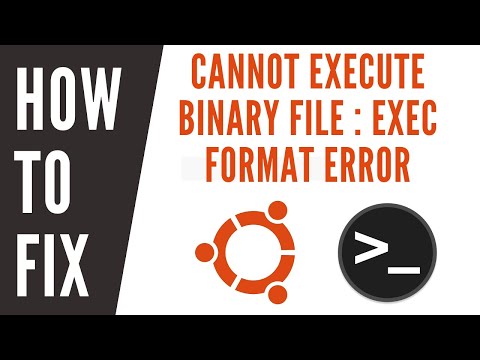
Found 7 images related to docker exec format error theme
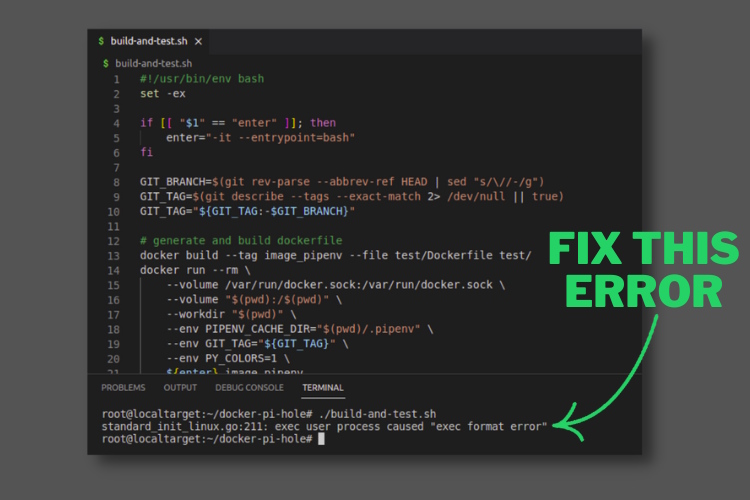
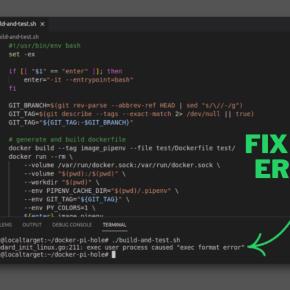
![windows subsystem for linux - OSError: [Errno 8] Exec format error - python - Stack Overflow Windows Subsystem For Linux - Oserror: [Errno 8] Exec Format Error - Python - Stack Overflow](https://i.stack.imgur.com/OvrTM.jpg)

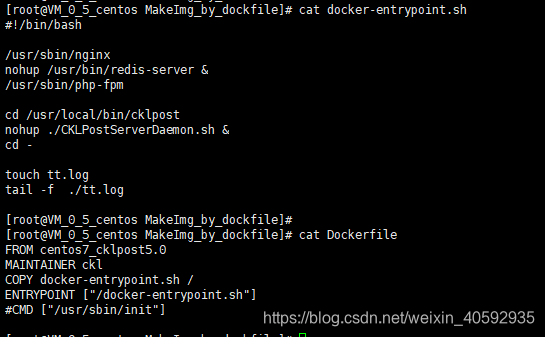

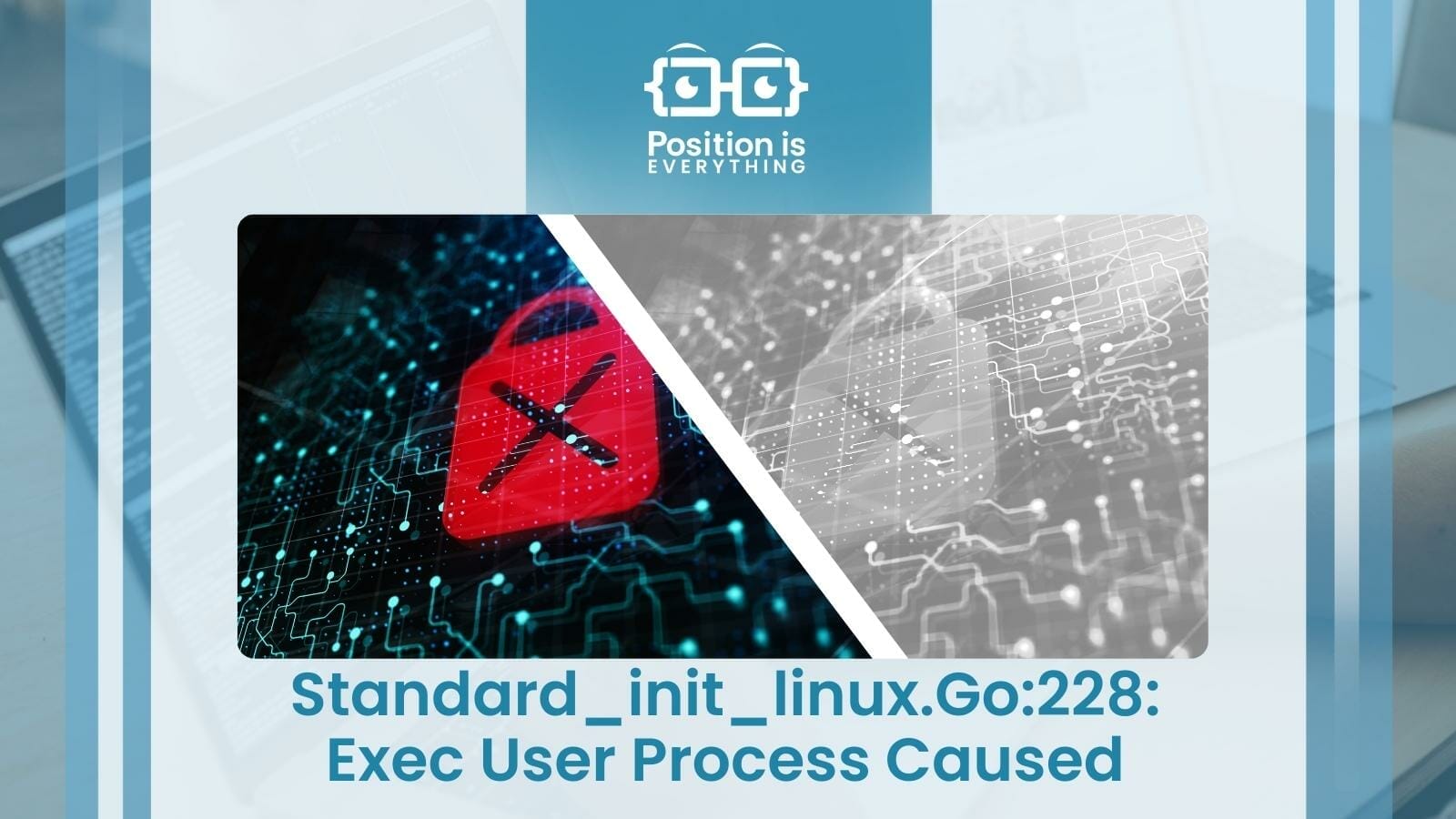







![Oserror: [Errno 8] Exec Format Error: Origination Reasons and Fixes Oserror: [Errno 8] Exec Format Error: Origination Reasons And Fixes](https://ei7sbsqceej.exactdn.com/wp-content/uploads/2022/07/Why-Is-Oserror-Errno-8-Exec-Format-Error-Happening.jpg?strip=all&lossy=1&w=2560&ssl=1)

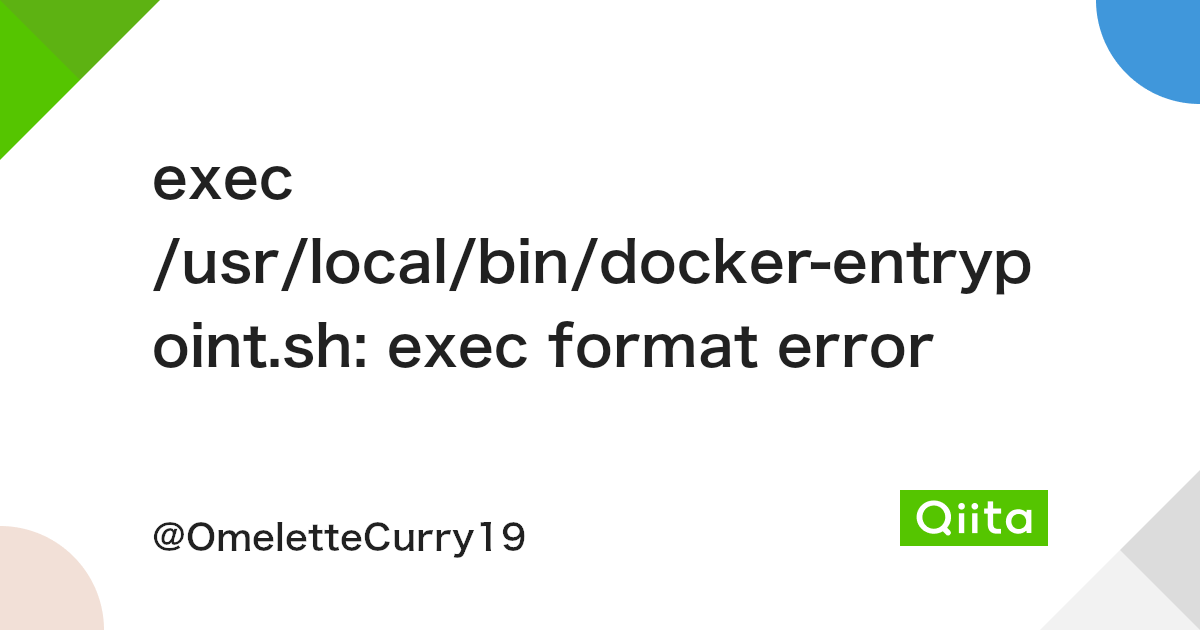
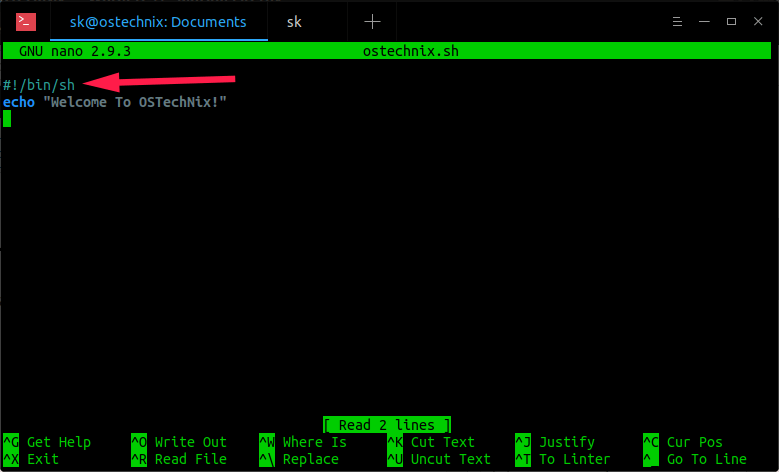



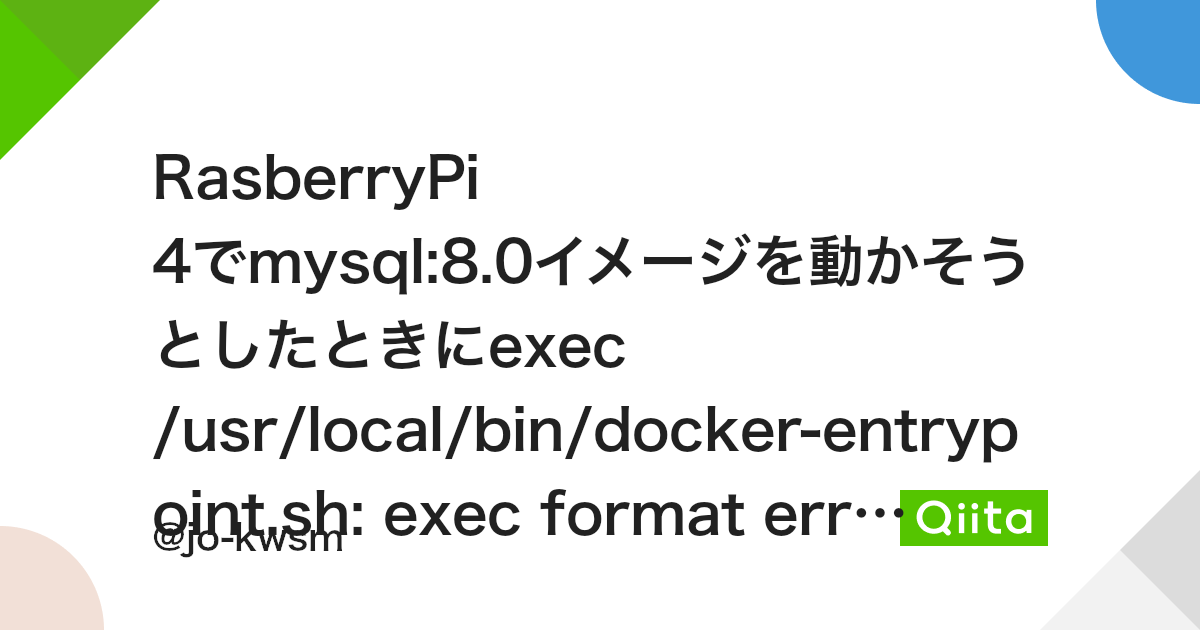



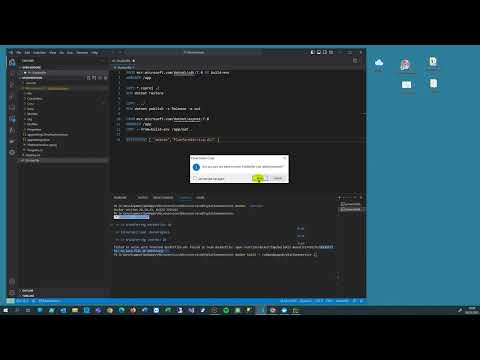
![Oserror: [Errno 8] Exec Format Error: Origination Reasons and Fixes Oserror: [Errno 8] Exec Format Error: Origination Reasons And Fixes](https://ei7sbsqceej.exactdn.com/wp-content/uploads/2022/07/Solve-Oserror-Errno-8-Exec-Format-Error.jpg)
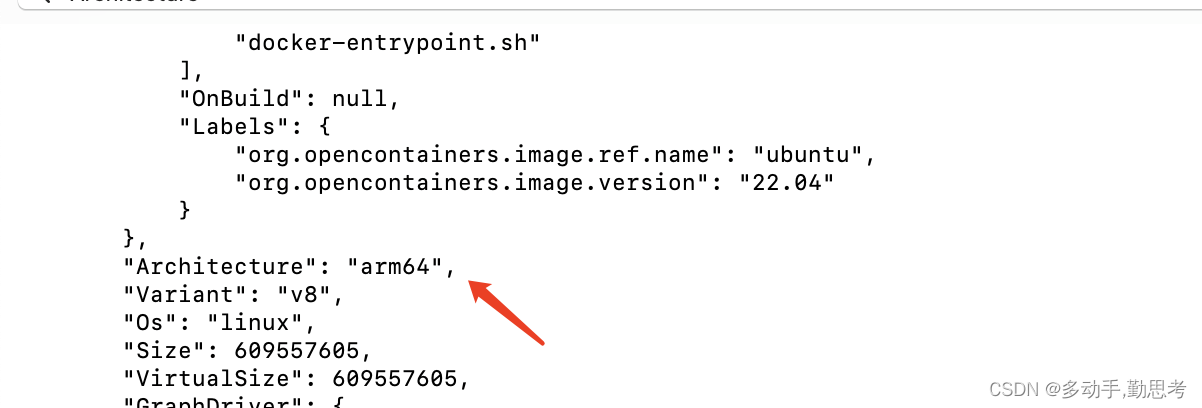





![How fix docker compose PermissionError: [Errno 13] Permission denied' How Fix Docker Compose Permissionerror: [Errno 13] Permission Denied'](https://images.unsplash.com/photo-1604238375994-ec5071343cc1?crop=entropy&cs=tinysrgb&fit=max&fm=jpg&ixid=MnwxMTc3M3wwfDF8c2VhcmNofDV8fGRlbmllZHxlbnwwfHx8fDE2MzcwODk2NTk&ixlib=rb-1.2.1&q=80&w=1080)

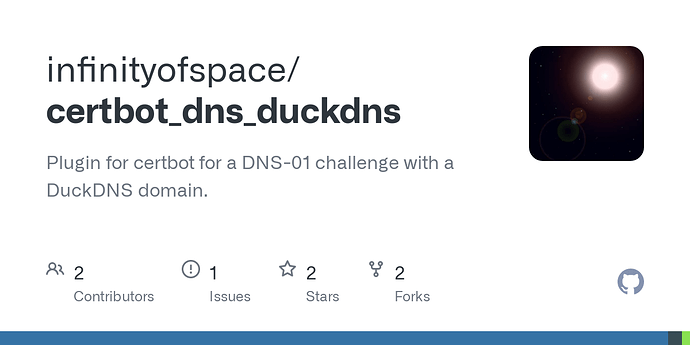
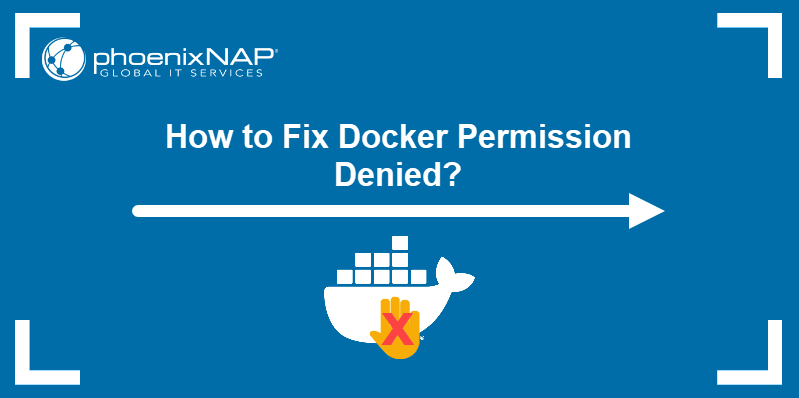

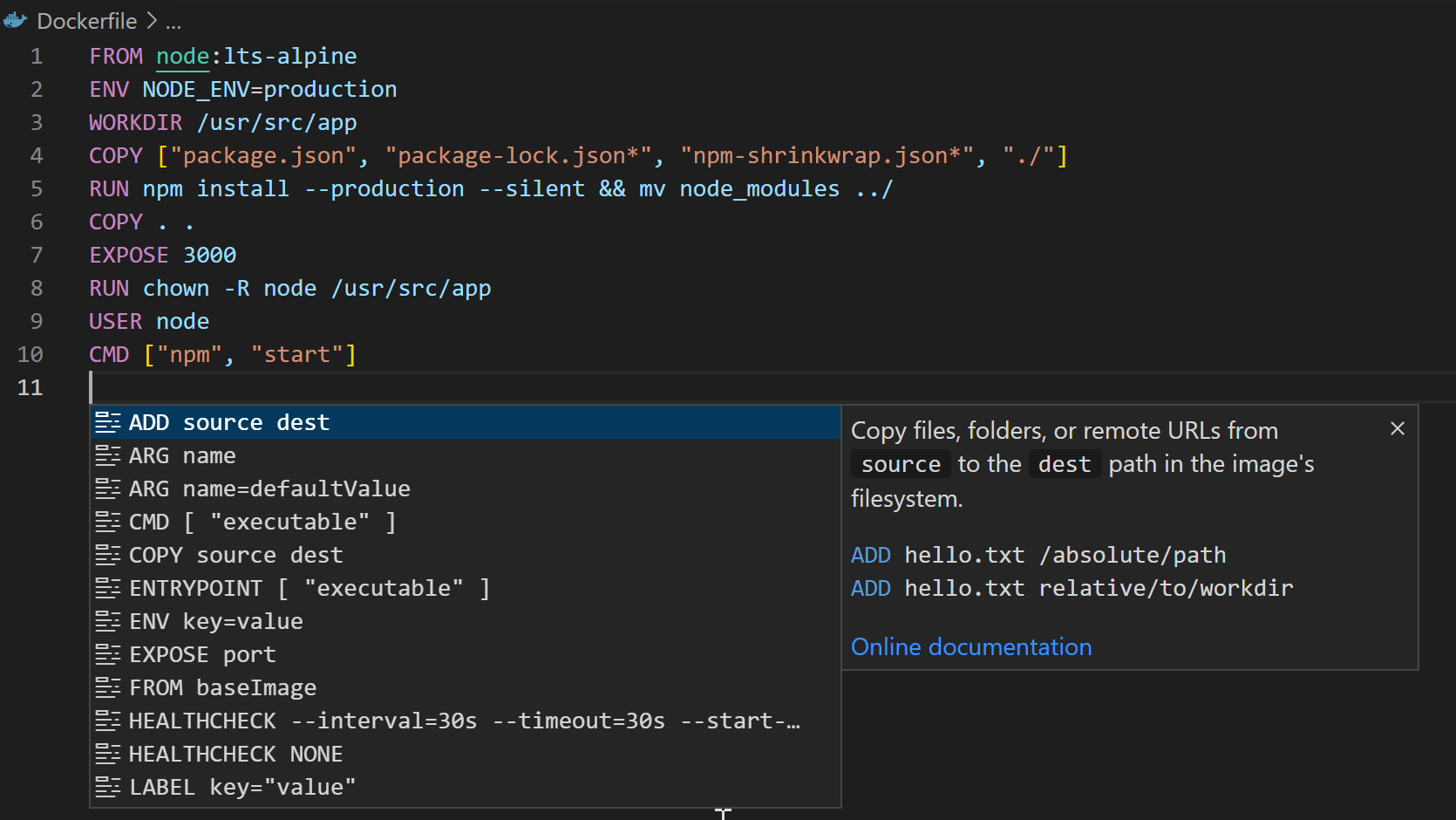




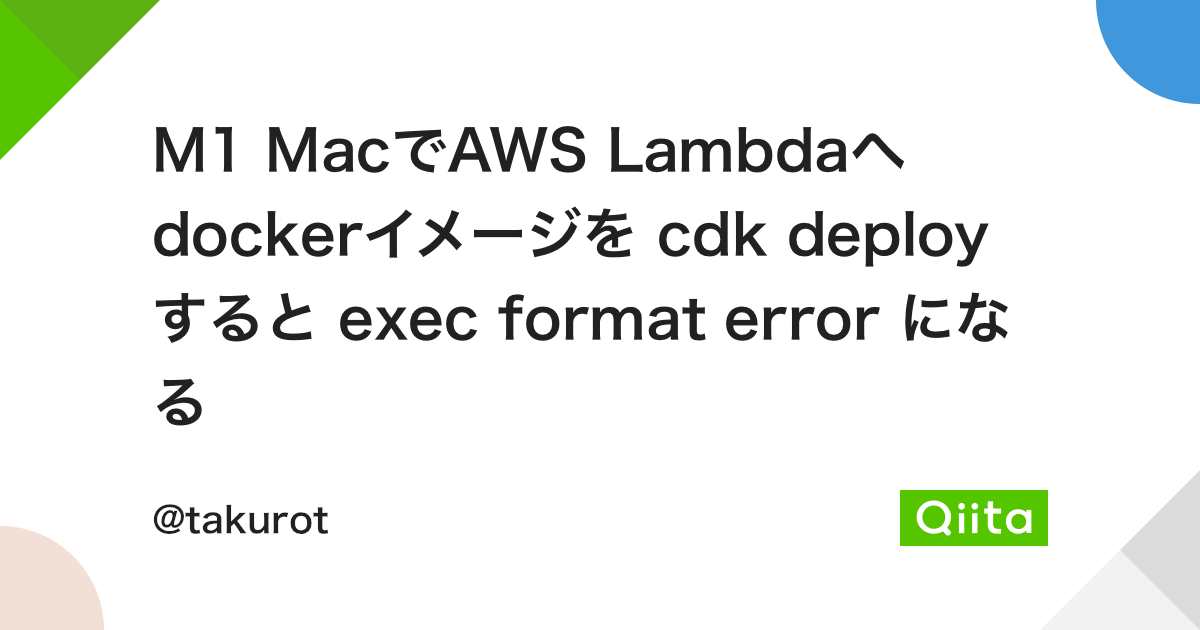

![Oserror: [Errno 8] Exec Format Error: Origination Reasons and Fixes Oserror: [Errno 8] Exec Format Error: Origination Reasons And Fixes](https://ei7sbsqceej.exactdn.com/wp-content/uploads/2022/07/Why-Is-Oserror-Errno-8-Exec-Format-Error-Happening.jpg?strip=all&lossy=1&w=2560&ssl=1)

Article link: docker exec format error.
Learn more about the topic docker exec format error.
- Docker : exec /usr/bin/sh: exec format error – Stack Overflow
- Docker exec format error – How we sort it out? – Bobcares
- How to Fix “exec user process caused: exec format error”
- Docker exec format error – How we sort it out? – Bobcares
- Docker Exec: How to Enter Into a Docker Container’s Shell?
- How to Exit a Docker Container {2 Simple Methods} – phoenixNAP
- How do you attach and detach from Docker’s process? – Better Stack
- On arm64 – exec /usr/local/bin/docker-entrypoint.sh … – GitHub
- exec format error and Container is restarting, wait until the …
- “exec /sbin/tini: exec format error” on loading newest image
- How to fix Docker exec format error? – Candid.Technology
- How to Fix exec user process caused: exec format error
- Install error on my server: exec /bin/bash: exec format error
- Getting exec format error in ECS with Fargate | AWS re:Post